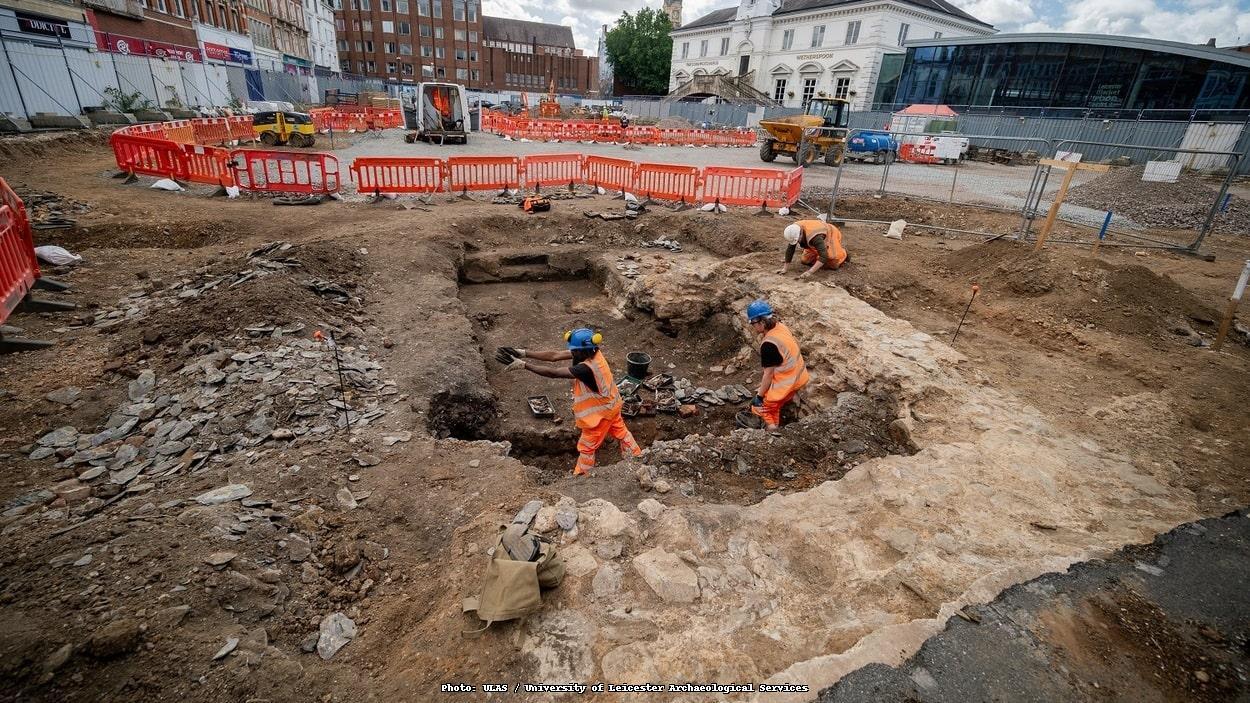Truth & Goodness
4,000 Space Mirrors Could Light Up Earth. Is It Day or Disaster?
04 December 2025

Right beneath the centre of the modern-day Leicester market, archaeologists have unearthed the 1,900-year-old burial of an infant. However, this was no isolated grave—the dig revealed fragments of a lost settlement, including vaults described in 16th-century sources as the "most loathsome prison" in England.
The burial was not the only discovery under the market. Archaeologists also uncovered sections of the city’s former structures: corridors, outbuildings, and spots where ceramics, coins, and pieces of jewellery were found. These are the footprints of ordinary life from nearly two millennia ago.
For years, many believed Leicester’s history was thoroughly catalogued and that “nothing here could surprise us anymore.” Yet, the very heart of the city—its nucleus—has proven to be the least explored area. Now, a major twist has emerged right here: a mysterious discovery that raises many questions about the city’s origins and past.
“The market square refurbishment gave us a rare opportunity to investigate what lies beneath this important area. We anticipated finding Roman evidence, as the market is located in what would have been the southeastern corner of Roman Leicester, but the discoveries exceeded our expectations,” said Dr. Gavin Speed, who led the Leicester excavations, quoted on the official Leicester City Council portal.
Leicester, a city in the Midlands, traces its history back to around 40 AD. It predates the Roman invasion, with numerous studies confirming the presence of a Celtic settlement. Initially, the city served as a military garrison. Eventually, it developed into a settlement and, over centuries, into a major city with a rich history.
Despite its large, modern appearance, Leicester still holds many secrets. Mysteries that are only now being brought to light.
During the market research, the ULAS team also uncovered the remains of a structure that 16th-century sources describe as the “most loathsome prison” in the city.
In practice, this was a complex of dungeons with no access to daylight, connected to the so-called Gainsborough Chamber—a space where council meetings and court proceedings were held for hundreds of years. This section of the market was repeatedly redeveloped in the 19th and 20th centuries, causing some original documentation to vanish.
Various elements of mosaic and pottery were found there, alongside coins and jewellery. Nevertheless, something else was even more intriguing.
Archaeologists also came across a newborn’s grave, dated to about 1,900 years ago. In Roman Britain, such child burials were more common than we might assume today—infants were often interred beneath the floors of domestic or farm buildings, rather than in formal cemeteries.
This discovery confirms that real family life, not just administrative or production facilities, was taking place here. Significantly, a later Roman stone building was constructed directly over this burial, so the trace of the child was covered and virtually undiscoverable until these Leicester excavations.
“Associated with this later phase, we discovered Roman tesserae—the small stone cubes used in mosaics—as well as pottery, coins, and jewellery items. These finds help us piece together a picture of daily life and the economy of Roman Leicester,” said the chief archaeologist from the University of Leicester Archaeological Services (ULAS).
The finds included:
And this is just the beginning of the large-scale research effort.
Archaeologists state plainly that they have yet to reach the deepest layers and do not yet know exactly what lies beneath these corridors. If one “city beneath the city” survived in the centre of Leicester, how many layers of this part of England’s history remain hidden—just a few metres down?
This matters to us all. It shows that the cities we live in today have layers of history below them that we know nothing about. Crucially, the study of the past doesn’t end in museums—because new chapters can be uncovered right beneath the ordinary marketplace walked by people every day. If such things are still being found in the heart of Leicester, the question is: how many similar sites are hidden beneath other cities across Europe?
England hides many extraordinary archaeological and paleontological finds that allow us to better understand the region’s history—from the age of the dinosaurs to the Roman era.
Around 200 dinosaur footprints from 166 million years ago were discovered in a quarry, belonging to five species, including the Megalosaurus.
Over 800 prehistoric stone tools were unearthed, including hand-axes up to 30 cm long, used for processing meat and hide.
It is a royal Anglo-Saxon burial from the 7th century containing a ship and rich treasures, revealing the culture and power of early medieval England.
Read this article in Polish: Miasto pod miastem. Odkrycie w Anglii zaskoczyło nawet archeologów